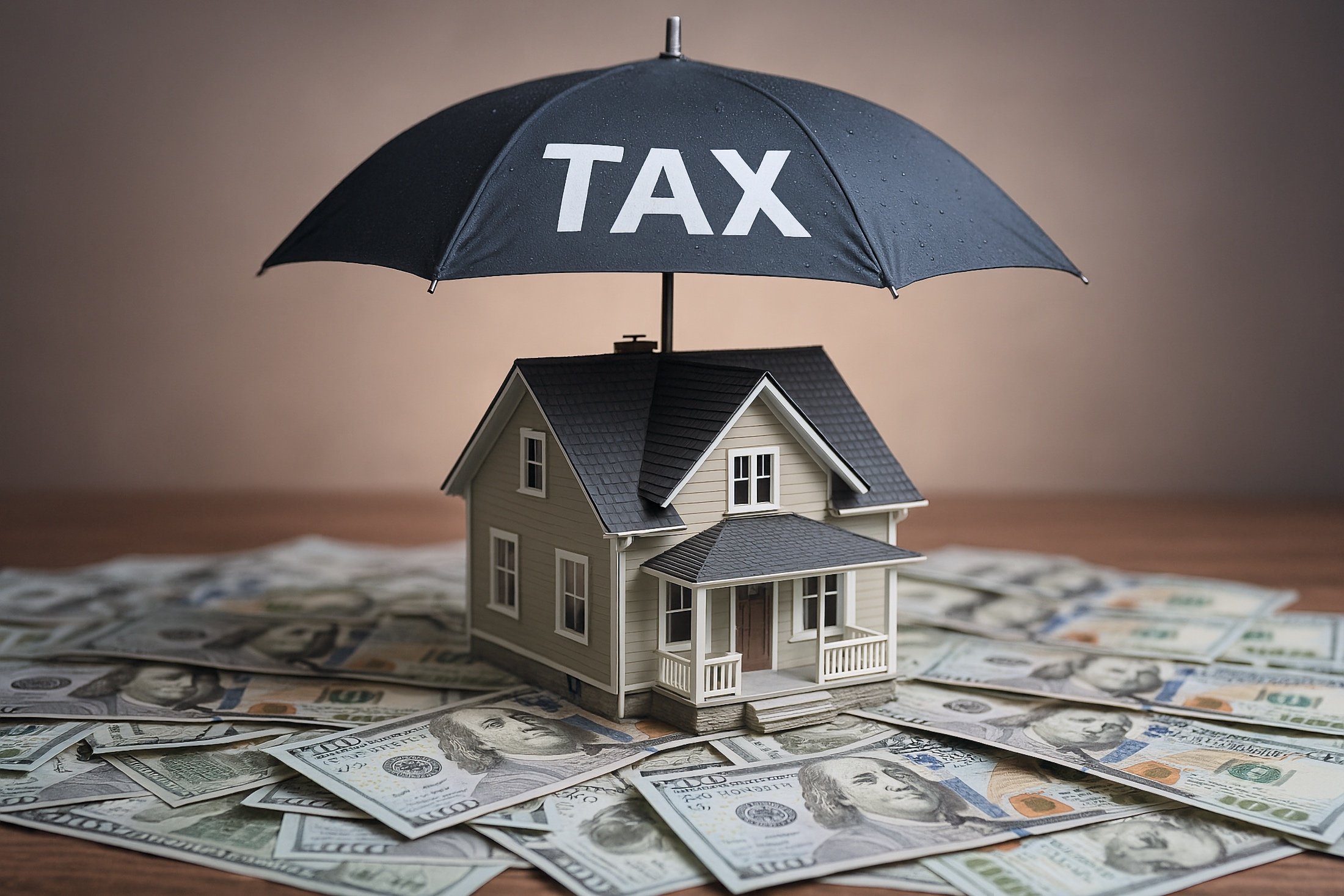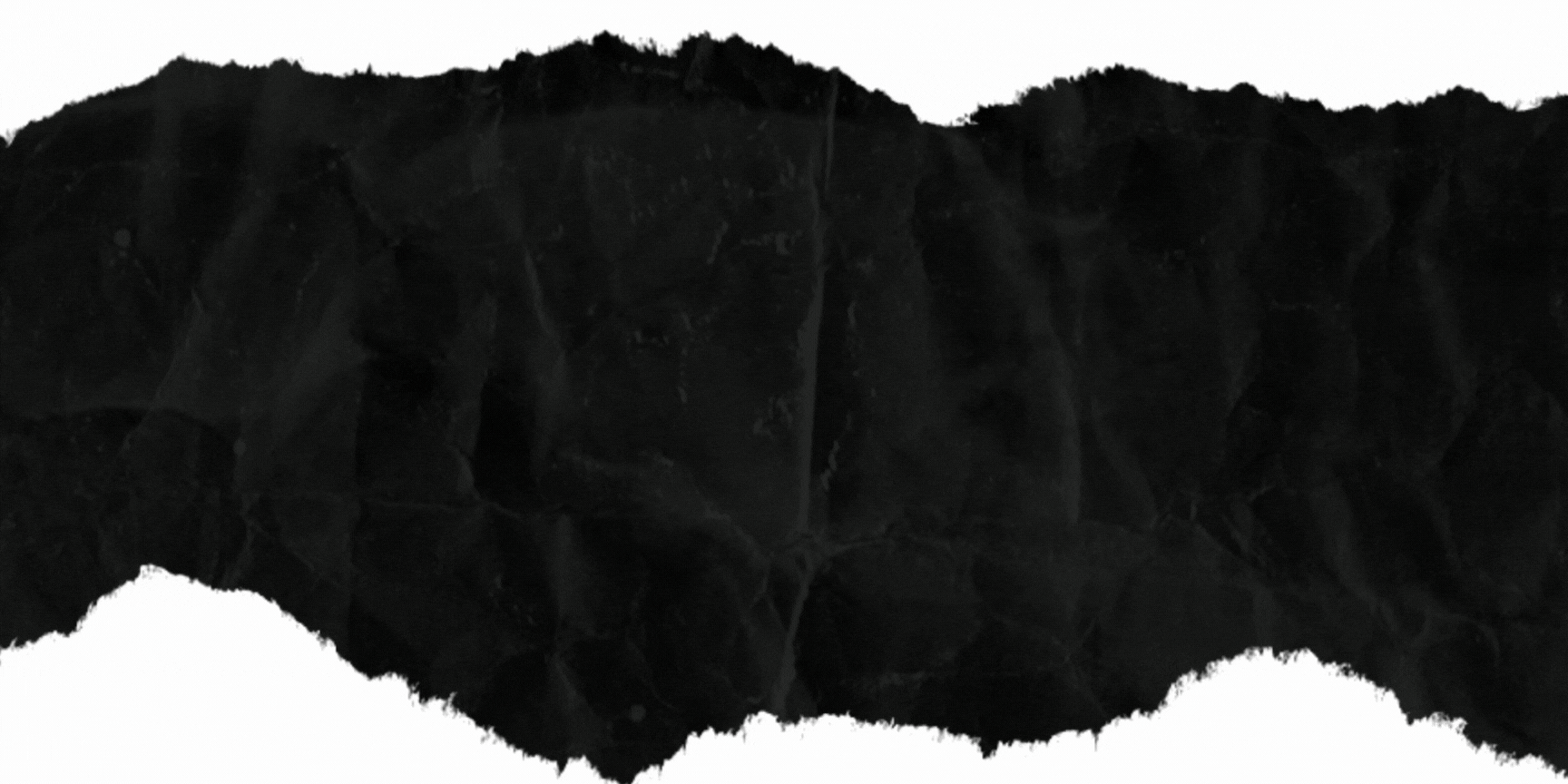You know what’s a good problem to have? Sitting on a huge mountain of equity that you’ve built up in your house over decades of ownership. That’s really never a problem, until the time when you want to sell your house and turn that equity into actual cash. That becomes a problem because many long-time Bay Area homeowners will get a nasty memo from their tax preparer: you’ll probably be paying hundreds of thousands of dollars in capital gains tax when you sell. Now that’s a problem in need of a solution – or possibly several combinations of solutions.
Selling your primary residence can trigger capital gains tax if your home’s value has increased. Fortunately, U.S. tax law provides several legal strategies to reduce or avoid this tax. Below is a structured guide outlining key methods – from the Section 121 home sale exclusion to various reinvestment and deferral options, plus special exemptions and potential pitfalls to watch out for. With careful planning, it is possible to significantly reduce or eliminate this tax burden.
Section 121 Home Sale Exclusion (Primary Residence Exclusion)
Section 121 allows you to exclude up to $250,000 of capital gain from income (or up to $500,000 for a married couple filing jointly) when you sell your main home. Any profit under these thresholds is tax-free, meaning you owe no capital gains tax on that portion. Gains above the limit remain taxable at capital gains rates. (Losses on a personal residence are not tax-deductible.)
Ownership & Use Requirements
To qualify, you must have owned and used the home as your principal residence for at least 2 of the 5 years preceding the sale. These two years don’t need to be consecutive; for example, you can live in the home for a total of 24 months spread over a five-year period. You can only have one primary residence at a time, and the IRS uses factors like your address on tax returns, voter registration, etc., to determine which home is primary.
Frequency Limit – Once Every Two Years
The Section 121 exclusion can generally be used only once in a two-year period. If you have claimed the exclusion on another home sale within the last 2 years, you cannot use it again until two years have passed. This rule prevents taxpayers from repeatedly flipping residences tax-free.
Married Couples Benefit
Married couples filing jointly can qualify for the $500,000 exclusion if certain conditions are met : (1) at least one spouse must have owned the home for 2+ years, (2) both spouses must have used the home as a primary residence for 2+ years out of the last 5, and (3) neither spouse used the exclusion on another sale in the past 2 years. If one spouse doesn’t meet the use test (for example, you married recently), you may only get the $250K single exclusion unless you qualify for an exception (such as the surviving spouse rule, discussed below).
Partial Exclusion for Unforeseen Circumstances
Even if you don’t meet the full 2-year residency requirement, you might qualify for a prorated (partial) exclusion if you had to sell early due to specific reasons. The IRS permits a reduced exclusion if the primary reason for the sale was a change in workplace location, health issues, or certain unforeseeable events (e.g. job transfer, divorce, military deployment, death in the family, multiple births from one pregnancy, etc.). In such cases, you get a fraction of the $250K/$500K exclusion equal to the portion of two years you did occupy the home. (For example, if you only lived in the home one year (50% of the required two years) before an unforeseen job relocation, you could exclude about 50% of the normal $250k/$500k amount.)
Special Cases (Military, Divorce, Death)
Certain situations loosen the rules:
Military and Government Personnel: If you or your spouse serve in the military or certain federal roles (Foreign Service, intelligence community, Peace Corps), you can suspend the 5-year lookback period for up to 10 years while on qualified official extended duty away from home. This means you may still meet the “2 out of 5 years” test even if you were posted elsewhere and renting out your home during those years.
Divorce or Separation: If you transfer the home to a spouse or ex-spouse as part of a divorce settlement, it’s not treated as a taxable sale. Moreover, a divorced taxpayer who moved out can still count the time their ex-spouse continues to live in the house (under a divorce agreement) as time of their own residence for purposes of the exclusion. This helps an ex-spouse who no longer lives there still qualify for the exclusion when the home is eventually sold.
Surviving Spouse: If your spouse dies and you haven’t remarried, you can still claim the full $500,000 exclusion (instead of $250,000) if you sell within two years of your spouse’s death and the other conditions were met at the time of death. Essentially, a widow(er) gets a final chance to use the higher joint exclusion on a sale soon after the spouse’s passing. However, this is not really important in a community property state like California, because if your co-owning spouse dies, the property receives a full step-up in basis at that time, and selling then would result in no taxable gain.
Documentation – Proving Eligibility
Keep records that demonstrate your eligibility: e.g. purchase and sale dates, proof of occupancy (driver’s license, bills), and tax returns showing you didn’t take another home exclusion in the past 2 years. At closing, you’ll receive a Form 1099-S if there’s reportable gain. Even if the entire gain is excluded, you should maintain documentation in case the IRS inquires.
Increase Your Cost Basis to Reduce Gain
Reducing your taxable gain is another way to minimize capital gains tax. Remember, capital gain is calculated as selling price minus your adjusted basis (original cost plus certain additions). Homeowners can legally shrink the taxable gain by maximizing their basis:
Include Capital Improvements
Document any major improvements you made to the home – for example, adding a room, renovating a kitchen, replacing the roof, or other projects that add value or prolong the home’s life. These capital improvements increase your cost basis in the property , which directly reduces the amount of gain when you sell. (Routine repairs or maintenance don’t count, but improvements do.) Keep all receipts and records of these expenses.
Factor in Selling Costs
You can subtract selling expenses from your selling price before calculating gain. Costs such as real estate agent commissions, legal fees, title insurance, and transfer taxes reduce the sales proceeds considered for capital gains. By lowering the net profit, you lower the taxable gain. Make sure these are documented on your closing statement (HUD-1 or Closing Disclosure).
Home Office or Depreciation Adjustments
If you used part of your home for business (home office) or rented out a room, you likely claimed depreciation for that portion. Be aware that those depreciation deductions reduce your basis and must be “recaptured” (added back as taxable income) when you sell. You cannot exclude depreciation recapture under Section 121 – it is taxed at a 25% rate even if the rest of your home sale gain is excluded. If you made depreciation adjustments, ensure your basis is properly adjusted and expect some tax on that portion.
1031 Exchange – Converting Primary Home to Rental to Defer Tax
Normally, like-kind exchanges under IRC Section 1031 allow real estate investors to defer capital gains tax by reinvesting sale proceeds into another property, but 1031 exchanges apply only to business or investment properties – not a personal residence. However, there is a legitimate strategy if you have a highly appreciated home that exceeds the Section 121 exclusion: convert your home into a rental property first, then do a 1031 exchange.
Warning
This strategy requires careful planning and adherence to 1031 rules. If the IRS believes you converted to rental primarily to avoid tax without bona fide rental intent, they could disallow the exchange. The 2-year investment holding is a guideline, and not tax law. Whether or not the IRS agrees that a 1031 exchange is valid is based heavily on intent.
Always use a qualified intermediary for the exchange, and consult a tax advisor. Also note, any period of “non-qualified use” (renting while not your primary residence after 2008) can proportionally reduce the excludable gain under Section 121. In short, the longer it was a rental relative to your total ownership, the less of the gain qualifies for the exclusion.
Key points:
Rental Conversion
You must move out and rent the property for a period of time to establish it as an investment property. While tax law doesn’t specify a minimum rental period, experts often recommend renting it for at least 12+ months with no personal use to clearly show your intent to hold it for investment. During this time, it ceases to be your primary residence.
Sell and Exchange
Once it’s an investment property, you can sell it and roll the proceeds into a new “like-kind” property (such as a rental home or other real estate) via a 1031 exchange. Strict timelines apply – you must identify potential replacement property within 45 days and complete the purchase within 180 days of the sale. By doing so, any gain attributable to the investment use is deferred rather than recognized at sale. You’ll pay no immediate tax on the portion of gain rolled into the new property.
Rapidly Depreciate the New Property
Here’s a pro tip for you: after you’ve moved out of your primary residence, rented it, then sold it and exchanged it into another rental property, you can use cost segregation to rapidly depreciate that property – allowing you to claim outsize tax deductions against any income that property generates, potentially saving you thousands or perhaps tens of thousands of dollars per year in tax.
Combine with Section 121 Exclusion 🔥
Here’s the big benefit – you can use the $250K/$500K exclusion for the portion of the gain attributable to the time it was your primary home, and 1031-exchange the rest. The IRS has sanctioned this combo strategy. For example, suppose a married couple stands to gain $800,000 on a home sale. They move out, rent the home for a year, then sell. They claim the $500,000 exclusion on part of the gain, and simultaneously defer the tax on the remaining $300,000 by investing that into a new rental property via a 1031 exchange. This way, no immediate tax is due on the sale – $500K is tax-free and the other $300K is deferred into the new property. (Any depreciation recapture from the rental period would still be taxed in the year of sale, since Section 121 won’t cover depreciation.)
Permanent Tax Elimination
A 1031 exchange is a deferral, but it can become an indefinite or permanent deferral if you continue exchanging properties. Investors sometimes keep swapping properties under 1031 rules until death – at which point heirs inherit the property with a stepped-up basis (wiping out the deferred gain). This “swap ’til you drop” approach effectively avoids capital gains tax entirely in the long run. (This is a long-term estate planning strategy – the key point is that 1031 lets you kick the tax can down the road.)
Reinvest in a Qualified Opportunity Fund (QOF)
The 2017 tax law introduced Qualified Opportunity Zones, which allow taxpayers to reinvest capital gains into special funds (QOFs) that finance projects in designated low-income areas. In return, you get to defer and potentially reduce the capital gains tax on the money invested. Here’s how a homeowner can use it:
Deferral of Home Sale Gain
If you sell your home and realize a capital gain (after the Section 121 exclusion, if applicable), you can elect to invest that gain into a Qualified Opportunity Fund within 180 days of the sale. By doing so, you defer paying tax on the invested gain until December 31, 2026 (under current law), or until you sell the QOF investment – whichever comes first. In other words, you don’t owe capital gains tax for now; it’s pushed out a few years.
Tax Reduction
Originally, the law provided a basis step-up for gains in QOFs held for several years (10% after 5 years, an additional 5% after 7 years) which would reduce the deferred gain that eventually gets taxed. However, because all deferred gains are scheduled to be recognized at the end of 2026, those timing benefits only fully applied to investments made by 2019 or 2021. If you invest today, you won’t get a big reduction on the 2026 tax, since there isn’t enough time to hit the 5- or 7-year marks before 2026 (unless Congress extends the program). So expect to pay the original deferred tax by 2026 at the latest.
10-Year Gain Exclusion on New Investment
The major benefit is that if you hold the Opportunity Fund investment for at least 10 years, any appreciation in the value of that new investment is completely tax-free when later sold. For example, you invest $200,000 of home-sale gain into a QOF. Years later, that stake is worth $300,000. If you’ve held it 10+ years, you could sell the QOF interest and owe no tax on the $100,000 gain – it’s excluded.
Considerations
Opportunity Funds can be a useful deferral tool if you cannot use the home sale exclusion or have gains above the exclusion. But they come with investment risk and long holding periods – your money may be tied up for a decade in a specialized investment. You also must follow the rules (invest within 180 days and properly elect deferral on your tax return). The primary benefit is tax deferral (short-term) and potential tax elimination on the new investment’s growth (long-term). If your goal is simply to avoid immediate capital gains tax and you’re willing to invest in an Opportunity Zone project, this is a legal route to explore. Always vet the fund’s prospects; don’t invest solely for the tax break.
Installment Sale (Seller Financing)
Instead of taking the full payment for your house at closing, you can spread the payments over several years by offering an installment sale (acting as the lender for the buyer). In tax terms, this lets you defer a portion of capital gains each year, potentially keeping your income in a lower bracket and reducing the overall tax bite. Key points:
How It Works
In an installment sale, the buyer pays you in installments over time (with interest), rather than a lump sum. For any sale where at least one payment is received after the tax year of sale, the IRS automatically allows the installment method for reporting gain (unless you elect out). Each payment you receive is part return of basis (tax-free), part profit (taxable gain), and possibly interest. You only pay capital gains tax on the profit portion as you receive it, not on the full gain upfront.
Tax Benefits
Spreading payments can defer and reduce your annual tax. For example, if you have $300,000 of taxable gain beyond the exclusion, taking it all in one year could push you into a higher tax bracket or subject you to the 3.8% Net Investment Income Tax. By taking, say, $60,000/year over 5 years, you might keep each year’s income in a lower bracket. You’re essentially recognizing the gain over multiple years, which can yield overall tax savings. Plus, you’ll be earning interest on the unpaid balance, which provides additional income (taxed as ordinary interest).
Using the Home Sale Exclusion
If part of your gain is covered by the $250K/$500K exclusion, that portion is tax-free. Any additional gain can be spread via installments. Practically, the tax-free portion is considered to come out first. For instance, if a single seller has a $300K total gain, the first $250K is excluded; the remaining $50K could be structured as installment payments, and only those $50K worth of payments (spread over years) carry taxable gain.
Pitfalls
You must charge a reasonable interest rate on installment payments – if you don’t, the IRS may impute interest (which can have its own tax consequences). You’ll pay taxes on the interest income each year. There’s also default risk – if the buyer stops paying, you might have to foreclose and take the property back, which can be complicated. Additionally, if you accelerate payments (buyer pays off early) or sell the installment note, the remaining deferred gain becomes taxable at once. Make sure the installment plan is executed with legal guidance and secure the debt with the property.
Other Special Exemptions and Loopholes
Beyond the primary strategies above, consider these additional legal provisions that can help minimize or avoid capital gains on a home sale:
Home Destroyed or Condemned (Section 1033 Involuntary Conversions)
If your home was destroyed (for example, in a fire or natural disaster) or taken by eminent domain, any insurance or condemnation proceeds that exceed your basis would normally be a taxable gain. However, Section 1033 allows you to defer that gain by rebuilding or purchasing a replacement home with the proceeds, within a specified time (usually 2 years for destruction, 3 years for condemnations). Essentially, if you reinvest the payout into a new residence of equal or greater value, you can avoid current tax on the gain. This is a rollover for involuntary sales, separate from Section 121. (Example: Your house (basis $100K) burns down and insurance pays $300K. Instead of paying tax on the $200K gain, you buy a new house for $300K+ and no gain is recognized.)
Vacant Land Adjacent to Home
If you sell land that was part of your main home (say you sell your backyard as a separate lot), you might be able to treat it as part of the sale of your home for exclusion purposes. Certain conditions apply (the land sale must occur within 2 years of the home sale, etc.), but it can be a way to extend the Section 121 exclusion to what is essentially part of your residence. This is a niche “loophole” for those with home acreage.
Offset Gains with Capital Losses
Don’t forget general tax planning – you can use capital losses from other investments to offset taxable gains on your home sale. There’s no dollar limit on using capital losses against capital gains in the same year. For example, if after the home exclusion you still have $50,000 of taxable gain, and you happen to have stock investments you sell at a $50,000 loss, the loss can fully offset the real estate gain so that no tax is owed on it. If your losses exceed your gains, up to $3,000 of the excess loss can also offset other income. This is not a home-specific provision but a general tax principle – often called tax-loss harvesting – that can reduce your overall capital gains tax.
Charitable Remainder Trust (CRT)
If you are charitably inclined and looking at a very large gain, one advanced strategy is to transfer the house into a charitable remainder trust before the sale. The CRT (which is tax-exempt) then sells the property, pays no capital gains tax, and invests the proceeds. You, as the beneficiary, receive an annual income stream from the trust for life or a term of years (a portion of which will be taxed to you each year), and whatever remains in the trust at death goes to charity. You also get a current charitable income tax deduction for the calculated remainder that will go to charity. This way, you bypass the immediate capital gain tax and spread it out over time via the income distributions, potentially reducing the total tax paid. The trade-off is that you irrevocably commit the remainder to charity and the trust must operate under strict rules. CRTs can be a win-win – providing you income and avoiding an upfront tax hit, while benefiting a charity – but professional planning is a must.
Estate “Step-Up” (If You Don’t Sell)
While not a strategy for a current sale, it’s worth noting: if a homeowner holds onto the residence until death, the heirs will receive a stepped-up basis to the home’s fair market value at that time. That means they could immediately sell the house and pay little or no capital gains tax because the basis reset to market value. This step-up in basis essentially eliminates the capital gain tax on all the appreciation during the original owner’s lifetime. Of course, this requires not selling during life – it’s a consideration in long-term estate planning (and assumes the estate isn’t large enough to incur separate estate taxes). The “step-up loophole” is simply the tax law’s treatment of inherited assets. It’s not applicable if you need to sell the home while alive, but it explains why some owners choose to keep highly appreciated property until death.
Pitfalls and Planning Considerations
When employing these strategies, be mindful of limitations and possible downsides:
Depreciation and Business Use
As mentioned, any depreciation claimed for a home office or rental use cannot be excluded under Section 121 and will be taxed (at up to 25%) upon sale. If you rented out your home for a period or used part of it for business, expect partial taxation on that portion of the gain (and prepare to calculate that separately). Similarly, the Section 121 exclusion won’t apply to gain allocable to any portion of the property not used as your primary residence (for example, if you have a duplex and only one unit was your home, the other unit’s sale is taxable, though you could possibly 1031 exchange that part).
Non-Qualified Use After 2008
The tax code prevents abuse of the exclusion by those who convert investment property to personal use. If you did not use the home as a primary residence for some period after 2008 (and before ultimately selling), that period is considered “non-qualified use.” Non-qualified use portions of your ownership reduce the exclusion proportionally. In practice, this means if you rented the home for a few years before moving in (or between periods of using it as a primary residence), the gain attributable to that rental period is not eligible for the $250K/$500K exclusion. Only the portion of the gain allocable to the time you actually lived in the home (plus any pre-2009 rental use) can be excluded. This can get complex – Worksheet 3 in IRS Publication 523 helps allocate gain in such cases.
Timing Matters
Plan your sale timing carefully. For maximum benefit, ensure you meet the 2-year ownership/use test before selling. For instance, if you’re close to 24 months, it may pay to wait until you hit that mark to secure the full exclusion. Also remember the 2-in-5 rule – if you moved out, you have up to three years to sell and still qualify (since those last 3 of the 5 years you didn’t live there). After three years of not living in the home, you lose eligibility. So if you relocate and can’t sell immediately, try to sell before the 3-year window closes to still use Section 121.
One Home at a Time
You can only have one primary residence for the exclusion. If you own multiple homes, be clear which one is your principal residence. Factors include where you spend the majority of time, your voter registration, etc. Trying to claim two “primary” homes at once (to double up exclusions) is not allowed and could invite an audit. If you and your spouse each owned separate primary homes prior to marriage, plan the timing of sales carefully – you might qualify to exclude gain on both if sales are more than 2 years apart, or use one exclusion each (but not a double $500k on one home).
1031 Exchange Complexity
If pursuing a 1031 exchange after converting your home to a rental, follow all rules diligently. Missing the 45-day or 180-day deadline will disqualify the exchange, making the entire gain taxable immediately. Also, once you complete a 1031 exchange into a new property, that new property must be held for investment (you can’t move into the new place right away – at least not without jeopardizing the exchange). Generally, to be safe, rent the replacement property out for a decent interval (many suggest a year) before converting it to personal use. And note: if you eventually convert that new property to a residence and sell, the prior exchange means you must own it at least 5 years before you can use Section 121 on it (another anti-abuse rule).
Opportunity Zone Caveats
Qualified Opportunity Funds only defer tax on the original home sale gain – they usually don’t eliminate it (except any potential reduction if you had invested early enough, as discussed). Come 2026, you’ll need funds to pay that deferred tax bill, whether or not your QOF investment succeeds. Moreover, Opportunity Zone investments are often illiquid and carry risk. Don’t invest solely for the tax deferral – make sure the investment itself makes financial sense. If you incur a loss on the QOF, you could end up paying tax in 2026 on a gain that, in hindsight, you no longer have.
State Taxes
Check your state’s tax rules on home sales. Many states follow the federal $250K/$500K exclusion, but not all. Some might tax a home sale gain that’s tax-free federally. Others have no state capital gains tax or special homeowner exclusions. For example, California taxes capital gains (including home sale gains above the federal exclusion) at ordinary state income tax rates, and New Jersey has its own exclusion rules. Always consider state and local tax impact – a strategy beneficial for federal tax might not save you from state tax.
Consult Professionals
Lastly, be aware that these strategies, especially the more complex ones (1031 exchanges, CRTs, etc.), have intricate rules and paperwork. Missteps can nullify the tax benefits. It’s wise to consult with a tax professional or real estate tax attorney when planning to sell a highly appreciated home. They can ensure you meet all requirements and help calculate any taxable portion. Proper guidance is itself a strategy to avoid pitfalls and fully utilize the legal tax breaks available to home sellers.
By understanding and leveraging these legal provisions, homeowners can significantly reduce or even eliminate capital gains tax on the sale of a primary residence. Make sure you meet all eligibility requirements and keep good records. With prudent planning – and perhaps professional advice – you can keep more of your home sale profits in your pocket, all within the bounds of U.S. tax law.
Wonderful San Jose Homes for Sale
2
3
4
5
6
7
8
9
10
11
12
13
14
15
16
17
18
19
20
21
22
23
24
25







